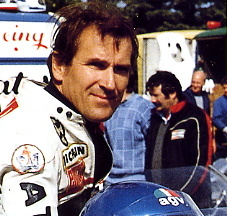
A luge is a small one- or two-person sled on which one sleds supine (face-up) and feet-first. A luger begins seated, propelling themselves initially from handles on either side of the start ramp, then steers by using the calf muscles to flex the sled's runners or by exerting opposite shoulder pressure to the pod. Racing sleds weigh 21–25 kg (46–55 lb) for singles and 25–30 kg (55–66 lb) for doubles. Luge is also the name of an Olympic sport that employs that sled and technique.

Bobsleigh or bobsled is a winter sport in which teams of 2 to 4 athletes make timed runs down narrow, twisting, banked, iced tracks in a gravity-powered sleigh. International bobsleigh competitions are governed by the International Bobsleigh and Skeleton Federation.

The 1964 Winter Olympics, officially known as the IX Olympic Winter Games and commonly known as Innsbruck 1964, were a winter multi-sport event which was celebrated in Innsbruck, Austria, from January 29 to February 9, 1964. The city was already an Olympic candidate, unsuccessfully bidding to host the 1960 Games. Innsbruck won the 1964 Games bid, defeating the cities of Calgary in Canada and Lahti in Finland. The sports venues, many of which were built for the Games, were located within a radius of 20 km (12 mi) around Innsbruck. The Games included 1,091 athletes from 36 nations, which was a record for the Winter Games at the time. Athletes participated in six sports and ten disciplines which bring together a total of thirty-four official events, seven more than the 1960 Winter Olympic Games. The luge made its debut on the Olympic program. Three Asian nations made their Winter Games debut: North Korea, India and Mongolia.

Sledding, sledging or sleighing is a winter sport typically carried out in a prone or seated position on a vehicle generically known as a sled, a sledge (British), or a sleigh. It is the basis of three Olympic sports: luge, skeleton and bobsledding. When practised on sand, it is known as a form of sandboarding. In Russia sledges are used for maritime activities including fishing and commuting from island to island on ice.
The FIL European Luge Championships, part of the International Luge Federation (FIL) have taken place since 1914. From 1914 to 1934, these championships were part of the Internationaler Schlittensportsverband. From 1935 to 1956, the championships were held under the auspices of the Fédération Internationale de Bobsleigh et de Tobogganing. Since 1962, the event has been under the auspices of the FIL and has been held in even-numbered years since 1980. Since 2012, it is held annually within a preselected World Cup stages in the so-called race-in-race mode. The results of non-European athletes at these World Cup stages are not counted for European Championships standings.

The International Luge Federation (French: Fédération Internationale de Luge de Course(FIL); German: Internationaler Rennrodelverband) is the main international federation for all luge sports. Founded by 13 nations at Davos, Switzerland in 1957, it has members of 53 national luge associations as of 2009 and is based in Berchtesgaden, Germany. In reaction to the 2022 Russian invasion of Ukraine, in March 2022 the FIL banned all Russian athletes, coaches, and officials from its events, suspended all Russian officials appointed to its Commissions and Working Groups, and deemed Russia ineligible to host any of its events.

The International Bobsleigh and Skeleton Federation (IBSF) is the international sports federation for the sliding sports of Bobsleigh and Skeleton. It was founded on 23 November 1923 by the delegates of Great Britain, France, Switzerland, Canada, and the United States at the meeting of their first International Congress in Paris, France. In June 2015, it announced a name change from FIBT to IBSF. The federation's headquarters are in Lausanne, Switzerland.

Manfred Stengl was an Austrian luger, bobsleigher and motorcycle road racer.
Josef "Pepi" Isser is an Austrian luger who competed in the 1950s. He won two medals at the inaugural event at the FIL World Luge Championships in Oslo in 1955 with a silver in the men's doubles and a bronze in the men's singles events. His silver in the men's doubles was with his sister Maria marked the only time a woman ever won a medal in a men's event at a World Championships, Winter Olympics, or European Championships until the debut of a mixed team event at both the European and World Championships in the late 1980s.

Ulrich Hahn is an East German luger who competed from the mid-1970s to the early 1980s. He won two gold medals in the men's doubles event at the FIL World Luge Championships.
Heinrich "Heini" Isser was an Austrian bobsledder-luger who competed during the 1950s and 1960s. He was born in Matrei in Osttirol.

The Königssee bobsleigh, luge, and skeleton track is a venue in Germany for bobsleigh, luge and skeleton, located in Schönau am Königssee, Bavaria, near Königssee and the border with Austria. Completed 56 years ago in 1968, it is the first permanent, artificially refrigerated bobsleigh, luge, and skeleton track in the world. In July 2021, the track was severely damaged by the floods that affected the European continent, and is currently under reconstruction.

The Olympic Sliding Centre Innsbruck is a venue for bobsleigh, luge and skeleton located in Igls, Austria. The most recent version of the track was completed in 1975 and is the first permanent, combination artificially refrigerated bobsleigh, luge, and skeleton track, serving as a model for other tracks of its kind worldwide. It hosted the bobsleigh, luge, and skeleton competitions for the 2012 Winter Youth Olympics.

The Mt. Van Hoevenberg Olympic Bobsled Run is a venue for bobsleigh, luge and skeleton in the United States, located at the Lake Placid Olympic Sports Complex in Lake Placid, New York. This venue was used for the 1932 and 1980 Winter Olympics and for the only winter Goodwill Games in 2000. The track hosted both the first FIBT World Championships and FIL World Luge Championships held outside of Europe, doing so in 1949 and 1983. The third and most recent version of the track was completed in 2000. In 2010 the bobsled track was listed on the National Register of Historic Places.

The Utah Olympic Park Track is a bobsleigh, luge, and skeleton track in the United States, located in the Utah Olympic Park near Park City, Utah. During the 2002 Winter Olympics in nearby Salt Lake City, the track hosted the bobsleigh, luge, and skeleton events, and is expected to reprise these roles for the 2034 Winter Olympics. Today the track still serves as a training center for Olympic and development level athletes and hosts numerous local and international competitions. It is one of two national tracks; the other is at Mt. Van Hoevenberg near Lake Placid, New York.

The Sigulda Bobsleigh and Luge Track is located in Sigulda, Latvia, built in 1986. Currently, the track manager is Dainis Dukurs, former bobsleigh brakeman and the father of skeleton racers Martins and Tomass Dukurs.

The Whistler Sliding Centre is a Canadian bobsleigh, luge, and skeleton track located in Whistler, British Columbia, that is 125 km (78 mi) north of Vancouver. The centre is part of the Whistler Blackcomb resort, which comprises two ski mountains separated by Fitzsimmons Creek. Located on the lowermost slope of the northern mountain, Whistler Sliding Centre hosted the bobsleigh, luge, and skeleton competitions for the 2010 Winter Olympics.
For the 1964 Winter Olympics in Innsbruck, Austria, a total of eight sports venues were used. Luge made its debut at these games, but were marred by the death of a British slider two weeks prior to the Games. A second ski jumping event debuted and the best two out of three jumps were used in both events for the only time in the history of the Winter Olympics. All eight venues would be used again when the Winter Games returned to Innsbruck twelve years later though the venues would undergo renovations in time for the 1976 Games.

For the 1976 Winter Olympics in Innsbruck, Austria, a total of eight sports venues were used. The games were originally awarded to Denver, Colorado in the United States in 1970, but they withdrew in the wake of Colorado residents voting against it for environmental and cost reasons in November 1972. This led to the International Olympic Committee opening up the bids for the games again, eventually awarding them to Innsbruck in February 1973. The Austrian city, having hosted the Winter Olympics in 1964, was in the process of having the venues used for those Games before Denver's with clear cutting of the alpine skiing venues, lessening of the amount of cross-country skiing routes, upgrading the ski jumps, adding lighting in the indoor sports arena to accommodate color television, and the construction of a combination bobsleigh and luge track. After the 1976 Games, the venues have remained in use, hosting events in Nordic skiing and the sliding sports. They hosted some of the events for the Winter Universiade in 2005 and seven of the eight venues served as host for the first Winter Youth Olympic Games in 2012.














